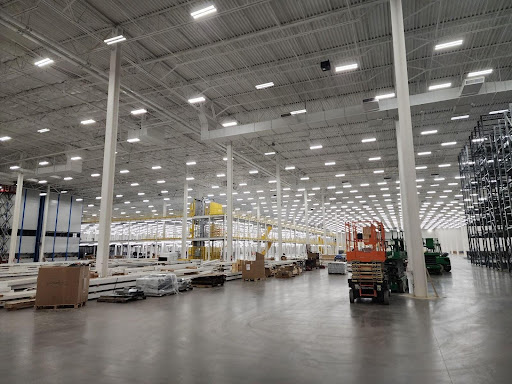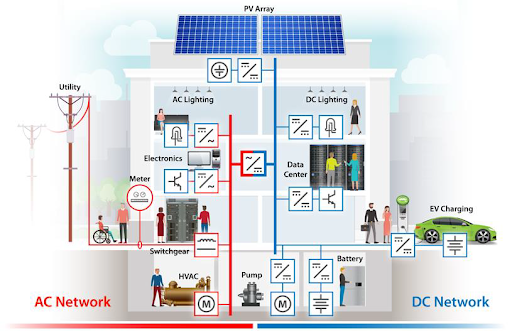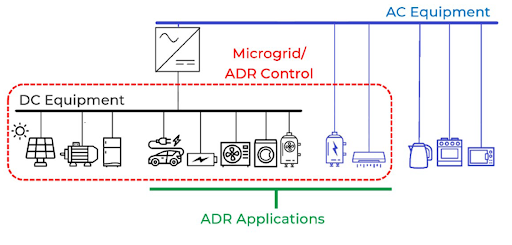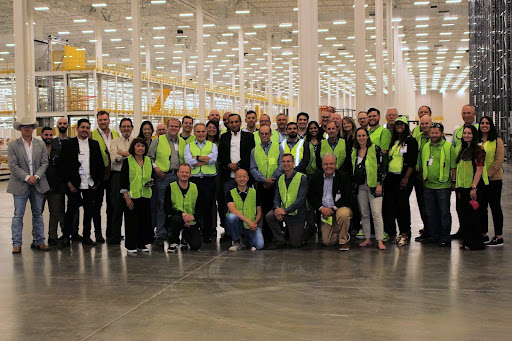
DC Power: Closing Gaps in Codes & Standards

Credit: Jim Frey, during Realcomm ELECTRIFY DC 2024 Site Visit
What if the electricity flowing through our buildings could be more efficient? Direct Current (DC) power, long overshadowed by its Alternating Current (AC) counterpart, is emerging as a key player in the quest for greater energy efficiency. However, as with any significant shift in technology and practice, the transition to DC power in buildings faces several challenges.
This article explores the potential of DC power, the hurdles to its adoption, and the critical steps needed to bridge the gap in our codes and standards. It is based on discussion and recommendations from Jim Frey’s presentation at the Electrify Smart DC-Powered Buildings conference, titled “Enabling Efficiency: Closing Gaps in Codes & Standards.”
The first step in this evolution is acknowledging and respecting the existing AC-based ecosystem. Decades of infrastructure development, professional expertise, and established practices are centered around AC power. This legacy system forms the backbone of our electrical grid and building systems.
The shift to DC isn’t just a matter of flipping a switch. It involves navigating complex friction points including, practitioner awareness, equipment availability, interoperability, and especially safety considerations. As we look to the future, we must find ways to avoid potential chaos by developing codes and standards that ensure interoperability between equipment and align with the full lifecycle of building design, construction, and operation.
The Efficiency Promise of DC Power
The primary driver for DC adoption is the potential for superior efficiency, with DC systems approximately 5-10% more efficient than their AC counterparts. Furthermore, every AC to DC (and sometimes back to AC) conversion eliminated in an integrated system can yield 3-5% energy savings. These efficiency gains have significant implications for both individual building performance and the broader grid.

Credit: LBNL/NREL – Building-Level DC Distribution Systems, 2019
Closing the Gaps in DC Energy Standards
Energy Codes
Current national model energy codes, while comprehensive for AC systems, fall short in addressing the unique characteristics and benefits of DC power systems. These codes were developed in an era dominated by AC power and consequently lack the necessary provisions to fully account for DC system efficiencies and capabilities. Our national model energy codes must evolve to provide pathways for efficient DC systems. This includes:
- Recognizing DC systems in energy modeling and compliance calculations
- Providing guidance on DC system design and implementation
- Establishing performance metrics specific to DC systems
To achieve these goals, we need evidence of cost-effectiveness and real-world performance data. This is where industry participation becomes crucial. We call upon DC adopters and researchers to collect and share evidence of energy savings and cost-effectiveness to inform code development.

Source: CSA Group Research – Automated Demand Response in DC Power Systems for Buildings, 2024
Equipment and Safety Standards
As DC-powered infrastructure expands from LED lighting to more complex systems like photovoltaics, energy storage, electric vehicle charging, and HVAC equipment, safety standards must keep pace. Key areas of focus include:
- Establishing robust safety standards for DC equipment
- Enabling DC equipment from multiple manufacturers to operate together as a system
- Aligning international equipment standards to create a world market for new products (voltage levels and distribution safety mechanisms)
Standards organizations are already working on these issues, and it’s crucial to support and accelerate their efforts. For more context on these activities check out:
- Current/OS Foundation: https://currentos.foundation/
- Emerge Alliance: https://www.emergealliance.org/
- Open DC Alliance: https://odca.zvei.org/
Installation Safety
As we develop new technologies and equipment standards, we must also consider the professionals who will be installing these systems. Contractors and integrators need comprehensive training to safely and efficiently work with DC systems. Developing a robust education framework for DC installations is crucial for the long-term success and safety of this transition.
The Path Forward
Programs and initiatives like the Realcomm Electrify and RE+ Grid Edge Theatre are leading the way in addressing these challenges. By providing a structured approach to electrification and DC adoption, such efforts offer valuable insights into the “why” and “how” of this transition. They serve as real-world laboratories, generating the kind of evidence and best practices we need to drive wider adoption.

Credit: Realcomm Staff
References:
- CSA Group: Automated Demand Response and Efficiency in DC Power Systems for Buildings (2024)
- EDF: DC Solutions in the service of Energy Transition – Sara NASR (2023)
- LBNL: Direct-DC Power in Buildings – identifying the best applications today (2020)
- 10-min interview during Realcomm ELECTRIFY DC 2024: Enabling Efficiency in Commercial Real Estate: Closing Gaps in Building Codes & Standards
2050 Partners: Leading the Push for a Sustainable Future
The transition to DC power in buildings represents a significant opportunity to enhance energy efficiency, improve the integration of renewable energy sources, and contribute to a more sustainable built environment. While challenges remain, particularly in updating our codes and standards, the potential benefits make this a journey worth undertaking. 2050 Partners is proud to contribute to these efforts.
Through a concerted effort from engineers, contractors, policymakers, and building owners – we can bridge the current gaps and create a future where our buildings are not just structures, but active participants in our sustainable energy ecosystem. The path to this future is charged with potential! To learn more about the great work our team is doing, head over to our resources page.


